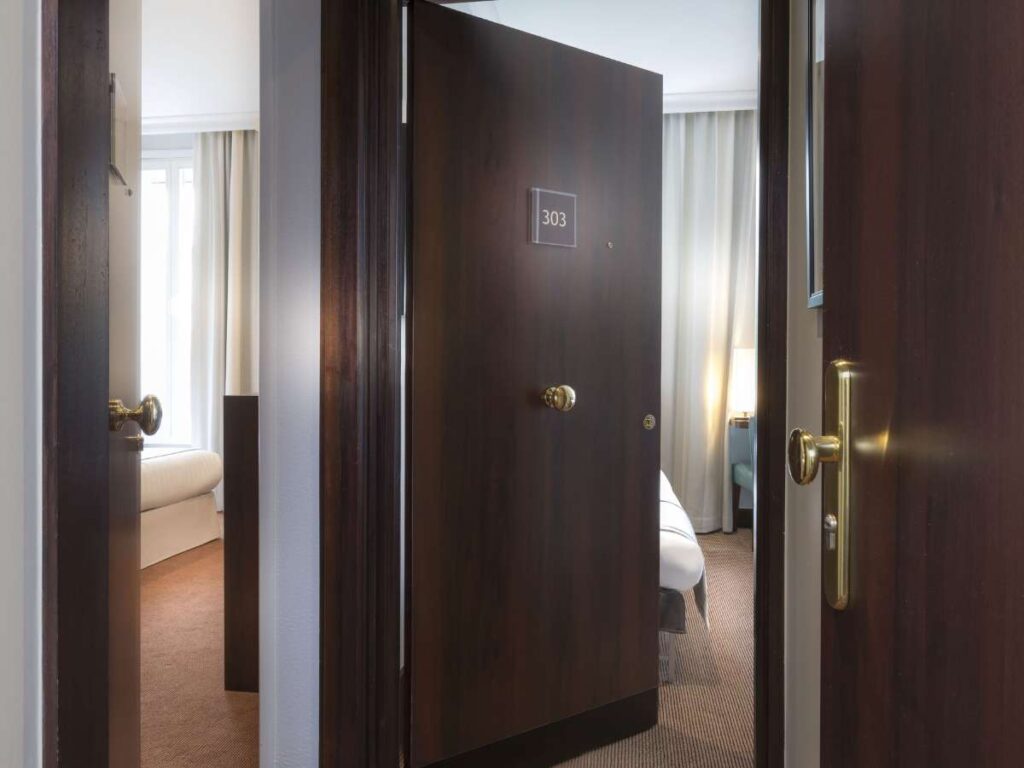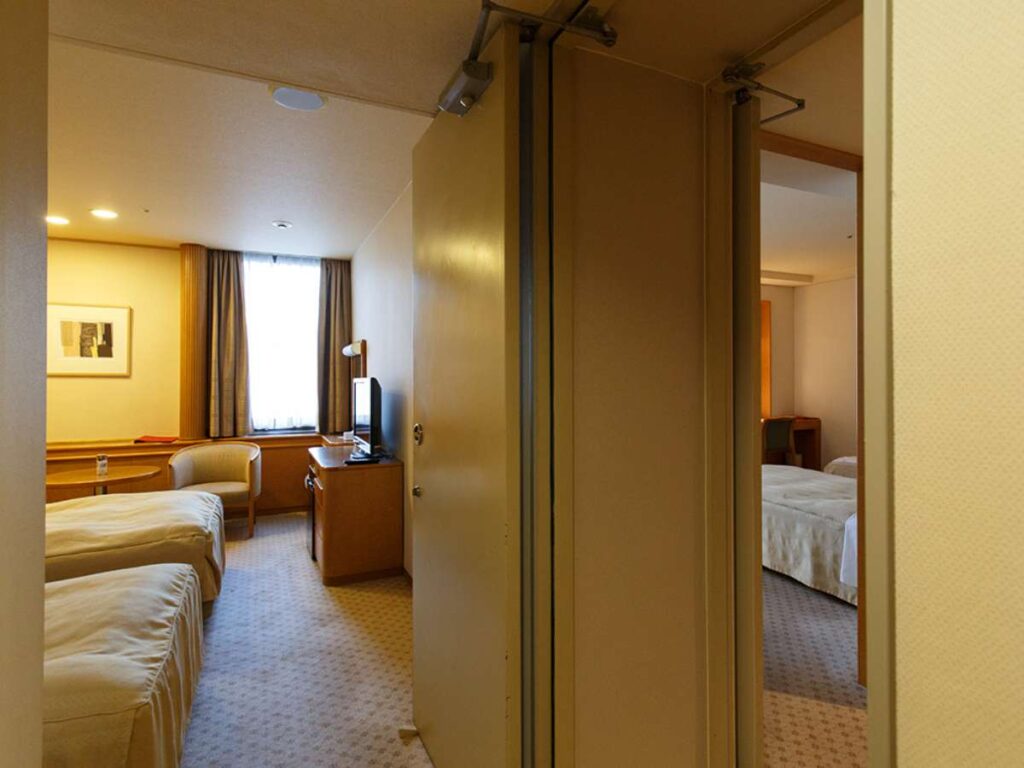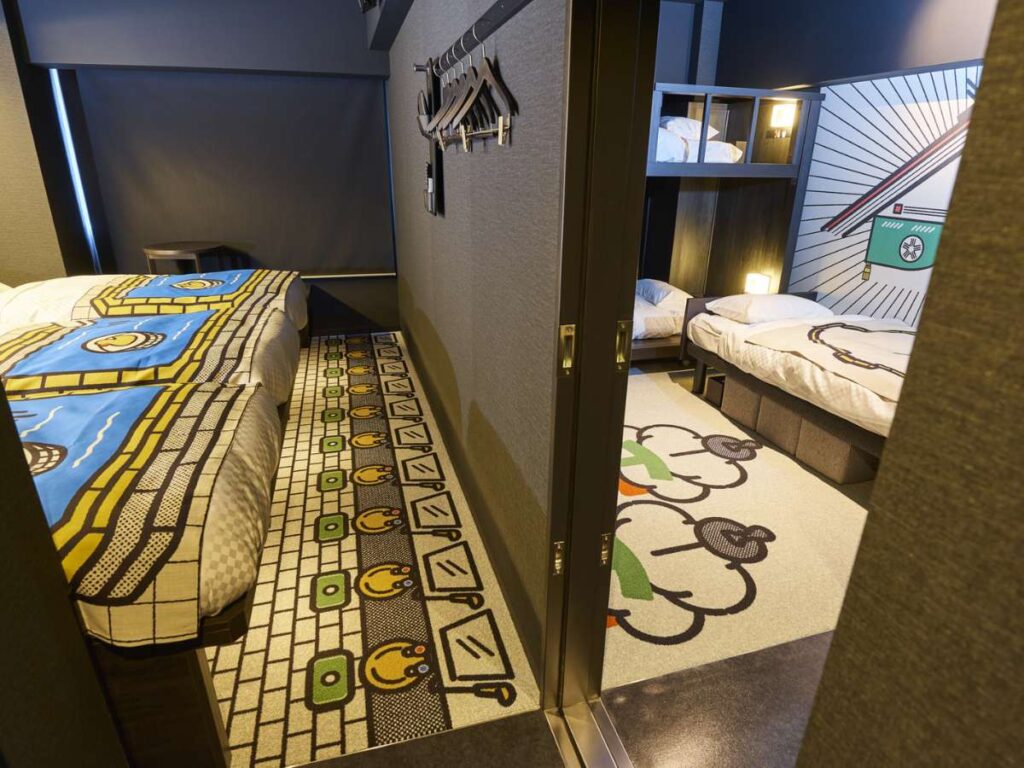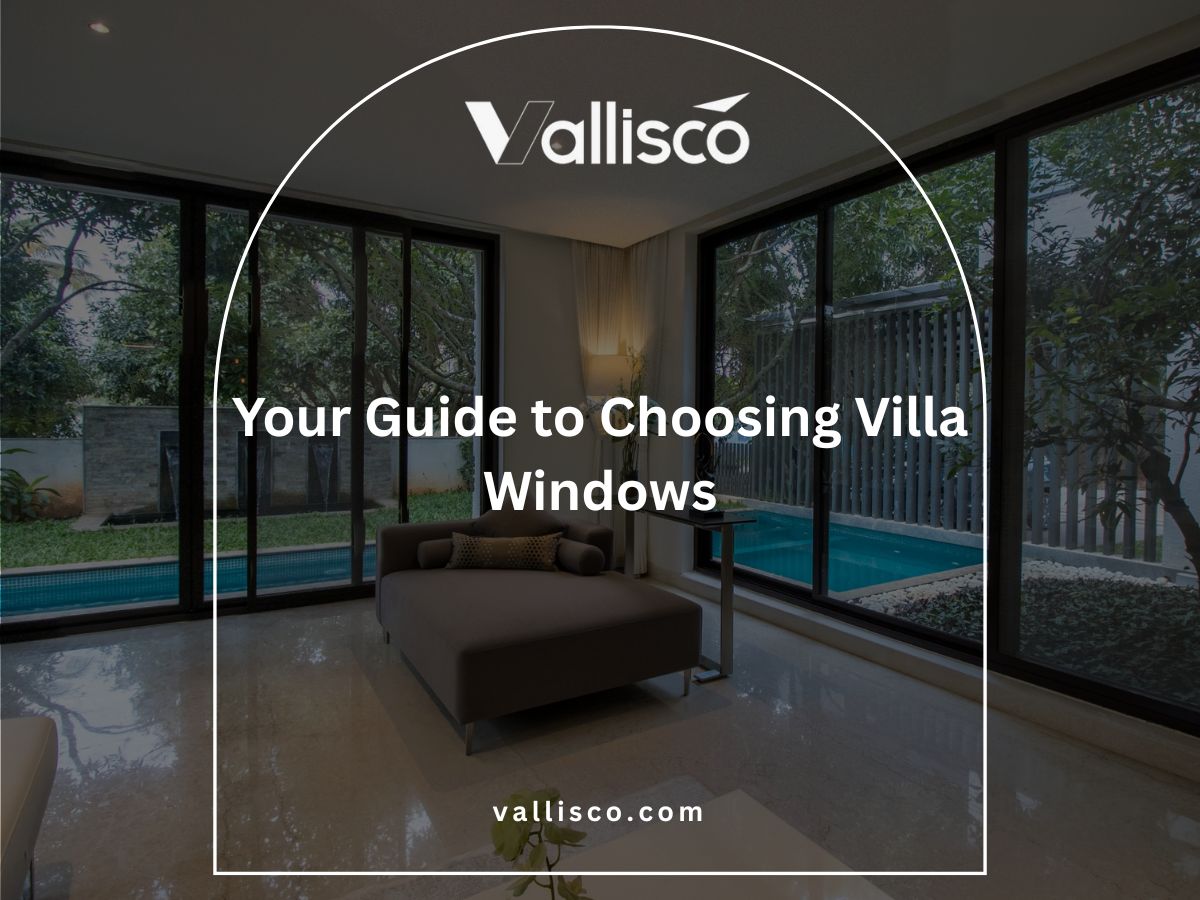A villa manager told me how guests with children kept asking about hotel connecting doors. He didn’t have them and admitted, “I feel like I’m missing out on family bookings.”
That moment showed me how common this question has become.
Stories like this one raise the same point for many property owners. Should you invest in hotel connecting doors or focus on other upgrades?
I’ve worked closely with owners and engineering teams across Southeast Asia and Europe. The advice in this article comes from their direct experiences in deciding whether hotel connecting doors were worth it.
In the next sections, you’ll find what these doors offer, the problems they may bring, and how they can impact guest satisfaction and revenue. This review will give you clear, practical guidance.
Every property owner faces choices that shape guest experience. This is one of them.
Keep reading to learn more!
1. What Are Hotel Connecting Doors?
When I talk with hotel or villa owners, many of them mix up “connecting” and “adjoining” rooms. Let’s clear that up first. A hotel connecting door is an interior door that links two separate guest rooms. When both doors are unlocked, guests can move between rooms without going through the hallway. This is different from adjoining rooms, which are only side by side but have no internal door.
Connecting doors are often requested by families, groups of friends, or even business travelers who want easy access between rooms while keeping privacy when needed.
So, in short, connecting doors are about flexibility. They let you market 2 rooms as separate or as a connected suite. That’s why many properties consider them when planning renovations or new builds.

2. Benefits of Hotel Connecting Doors for Property Owners
From my talks with hotel managers and villa owners, one thing is clear: connecting doors are more than just a design choice. They can change how guests see your property and how often they come back. Let’s look at some of the main benefits for you as the owner:
Boosting Guest Satisfaction and Reviews
Families and groups value convenience. A connecting door lets parents keep an eye on their kids without giving up privacy, or allows friends to share time together while still having space. When you make a guest’s stay easier, they notice.
Happy guests leave better reviews, and better reviews often lead to more bookings. In my experience, this benefit alone makes many owners consider adding connecting doors.
Competitive Edge in the Market
Not every property offers hotel connecting doors. When yours does, it sets you apart in the listings. For travelers comparing hotels online, small details can influence their choice.
If your hotel is in a crowded market, being able to advertise connecting rooms can give you an advantage. This is especially true in areas popular with families or groups.
Higher Revenue Potential
Connecting doors give you flexibility in how you sell your rooms. You can market them as single rooms or as a suite. That means you can book two rooms together more easily, often for one family or group.
For you, that translates into stronger occupancy rates. I’ve seen owners create special packages around connecting rooms, which helps maximize income per booking.
Flexible Room Use
Another benefit is how adaptable your rooms become. A pair of connected rooms can work for a family one week and two business travelers the next. You don’t lock yourself into one type of guest.
This flexibility gives you more ways to match your property’s space with the needs of your guests. Over time, that adaptability can make your rooms more valuable and easier to market.

3. Pros and Cons of Installing Connecting Doors
Every property investment has 2 sides. Hotel connecting doors can bring in more business, but they can also bring new challenges. Let’s break it down into clear pros and cons so you can see both angles before making your choice:
Pros
- Improved Guest Experience: Guests who travel as families or groups appreciate the convenience of connecting rooms. It makes their stay more comfortable, and that often leads to positive feedback and stronger guest loyalty.
- Better Room Sales Opportunities: By offering connecting rooms, you can sell two rooms together instead of just one. This not only boosts your occupancy but also makes it easier to upsell packages for families or groups.
- Increased Flexibility: A connecting setup allows you to market rooms in multiple ways. One week it can be two singles, the next it can be a combined suite. This flexibility gives you more options to match guest needs.
- Competitive Advantage: Many hotels don’t offer connecting doors, which means you can stand out in booking platforms. For guests comparing several options, this feature can tip the scale in your favor.
Cons
- Privacy and Noise Concerns: Poor sound insulation can lead to noise complaints. Guests expect privacy, and if the door doesn’t block sound well, it can become a reason for bad reviews.
- Security Issues: Some guests worry about safety when there’s a connecting door. Even with locks, the idea of another door between rooms can make people feel less secure.
- Installation and Compliance Costs: Adding connecting doors isn’t always simple. It often means structural changes and meeting fire or building codes, which adds to project costs.
- Ongoing Maintenance: Doors and locks need upkeep. Hinges, seals, and locks can wear faster because these doors get used more heavily than regular ones.
4. Different Types of Connecting Doors
When I talk with hotel owners or engineers, I find that many don’t realize there are different options for connecting doors. The type you choose depends on your property’s layout, your budget, and what your guests expect.
Let’s look at the most common types in a simple way so you can decide which works best for your building:
| Type of Door | Description | Best Use Case | Things to Consider |
| Standard Solid Core Door | Basic wooden or composite door with a solid interior. | Smaller hotels or inns needing a simple, affordable option. | Good for cost savings, but may need extra soundproofing. |
| Soundproof Door | Built with insulation layers to reduce noise transfer. | Properties targeting families or business travelers. | More expensive, but helps reduce guest complaints. |
| Fire-Rated Door | Specially made to resist fire for a set period. | Hotels that need to meet strict safety codes. | May be required by law in some areas, adds peace of mind for safety. |
| Double Door System | Two doors back-to-back, one in each room. | Larger hotels or villas looking for privacy plus access. | Better noise control and security, but takes up more wall space. |
| Sliding or Pocket Door | Slides into the wall to save space. | Properties with smaller rooms where swing doors don’t fit well. | Saves floor space, but may not provide the best soundproofing. |
Choosing the right connecting door depends on what matters most for your property, whether it’s safety, guest comfort, or cost. From what I’ve seen, many hotels combine fire-rated and soundproof features to balance safety with guest satisfaction.
5. Engineering & Design Considerations
From my talks with engineers and property owners, I’ve learned that connecting doors are not something you just “add in.” They require planning.
If you don’t think through the technical details, you could run into noise issues, safety problems, or even code violations. Here are some of the main points you should consider before installation:
Soundproofing and Privacy
I’ve seen hotels lose good reviews because they ignored this step. If you want families and business travelers to feel comfortable, treat soundproofing as a priority. Vallisco manufactures connecting doors built to reduce noise transfer, which makes them a practical option for properties that want fewer guest complaints.
Safety and Fire Codes
Depending on your location, you may be required to install fire-rated doors between rooms. These doors are designed to resist fire for a certain amount of time, giving guests more protection.
It’s not only about meeting regulations, it’s about showing that your property takes safety seriously. Check with local building codes before moving forward, and plan your design around those rules.
Layout and Space Planning
Connecting doors work best when the floor plan makes sense. If rooms are too small, a swing door can take up valuable space and limit furniture placement. In these cases, a sliding or pocket door might be better.
You’ll also want to think about which rooms to connect. It doesn’t make sense to link a business suite with a family room, for example. Match the layout to the guest types you want to serve.
Security Features
Guests will only use connecting doors if they feel safe. This means installing locks on both sides so that the door can’t be opened without permission. A double lock system is the standard for hotels.
I recommend checking the quality of the locks often. If a guest finds a faulty lock, it can create complaints and harm trust in your property. Security is as much about perception as it is about the actual hardware.

6. Alternatives to Connecting Doors
Connecting doors are helpful, but they are not the only way to meet guest needs. Some properties use other setups that still give families and groups the comfort they want. If you’re not ready to add connecting doors, here are some options you might think about:
- Family Suites: A family suite combines sleeping areas and a shared living space in one large unit. Guests like it because they don’t have to book two rooms, and you don’t need to add extra doors. This works well for villas or B&Bs with larger layouts.
- Apartment-Style Rooms: These setups give guests multiple bedrooms plus a common area. I’ve seen this model work in both city hotels and vacation rentals. It’s more like a home experience, which is attractive to families staying longer.
- Booking Adjacent Rooms: Some booking systems let guests select rooms next to each other. While it doesn’t offer direct access, it gives families peace of mind that they’ll be close together. It’s a lower-cost option compared to construction work.
- Shared Lounge Spaces: Another approach is to create a lounge or small living room that connects multiple rooms from a central point. This is often used in guesthouses and inns. It gives people a place to meet while still having private rooms.
- Flexible Furniture Layouts: Sometimes the solution is as simple as rearranging space. For example, having larger rooms with divider walls or pull-out beds can give families the flexibility they need. This won’t replace connecting doors, but it can help reduce demand for them.
7. Key Points to Consider Before Choosing Connecting Doors
From my talks with hotel owners and builders, I’ve seen that connecting doors can work well in the right setting. But they’re not for every property. Before you decide, here are a few key points worth thinking through.
Know Your Guests
Think about who stays at your property most often. If you host many families or groups, connecting doors may be a good fit. But if most of your guests are solo travelers or business guests, you may not see the same return.
Looking at your booking patterns will give you a clear picture. The demand should guide your decision, not just the idea itself.
Budget and Installation Costs
Installing connecting doors is not just about buying the doors. It may involve structural changes, meeting safety codes, and adding soundproofing. Costs can add up quickly.
If you plan new construction, it’s easier to add them into the design. Retrofitting older buildings will usually be more expensive.
Safety and Compliance
Every property has to follow local buildings and fire codes. In many regions, fire-rated doors are required for connecting rooms. Security is another factor. Guests need strong locks on both sides.
Skipping on these details could cause problems later, both legally and with guest trust. I always recommend checking regulations early in the planning stage. Vallisco guarantees that their connecting doors meet safety standards, which can help you stay compliant while giving guests peace of mind.
Long-Term Maintenance
Connecting doors see more wear than standard doors. Locks, hinges, and seals may need repairs more often. Noise insulation can also break down with time.
Plan for ongoing upkeep as part of your decision. This will keep guests happy and prevent small issues from turning into bad reviews.
Conclusion
The story we began with, about the villa owner who was worried about losing bookings, shows how real this decision is.
For some properties, connecting doors pay off by keeping families happy and filling more rooms. For others, the investment may not make sense.
This article walked you through the pros, cons, and alternatives, so you can decide what fits your property best.
Don’t let guesswork guide your upgrades.
If you’re thinking about adding connecting doors, Vallisco can help with products that meet safety and comfort standards. Contact us today!
Discover More Options
For more helpful content, explore our collection of recommended reads:
Still haven’t found what you’re looking for? Don’t hesitate to contact us. We’re available around the clock to assist you.







